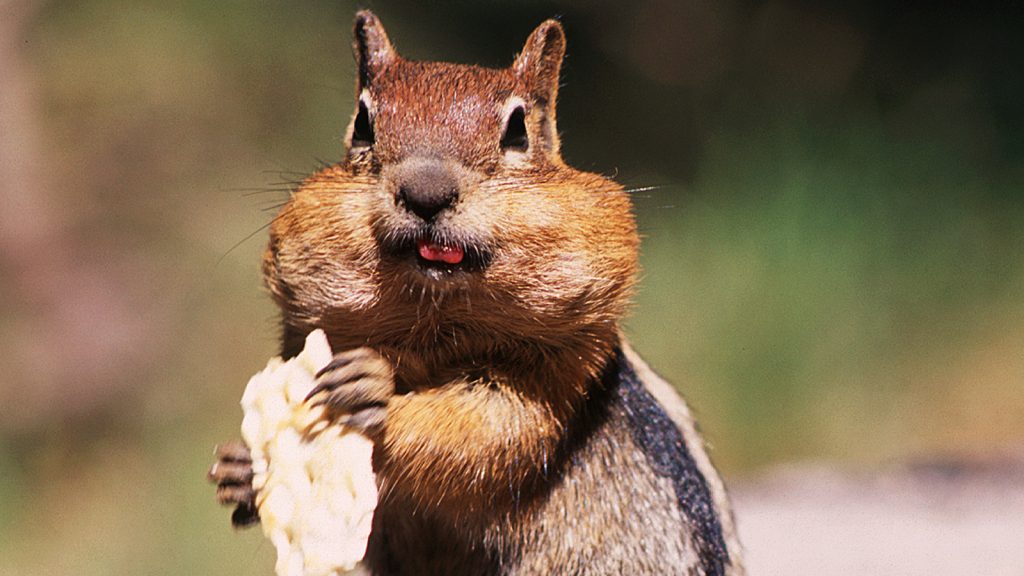Chipmunks construct complex burrows which can measure 3 – 4 metres in length. These burrows have several entrances, tunnels and chambers for sleeping which are kept very clean. Shells and faeces are stored in refuse tunnels. sleeping areas are enlarged and filled with shredded leaves to make a comfortable bed. Food is normally stored in the lowest tunnels, to keep it cool and fresh.
They have a varied omnivorous diet mainly consisting of nuts, fruits, seeds, berries, grains, birds eggs, small frogs, fungi, insects and worms. Food is stuffed into their large cheek pouches and carried back to store in their dens. Lots of food is gathered and placed in their burrows at the beginning of autumn to store for the winter.

Nevertheless, it is very lively and very fast. They have a bird-like chip which is used when danger is sensed or as a mating call for female chipmunks. Other communications include gestures such as waving their tails enabling them to communicate effectively with others of their species.
Chipmunks are solitary animals and male and female do not pair until breeding season. Although chipmunks hibernate from late autumn until early spring, they do not store fat, instead they slowly gnaw away at their supplies throughout the winter, waking every 2 weeks or so to eat.















